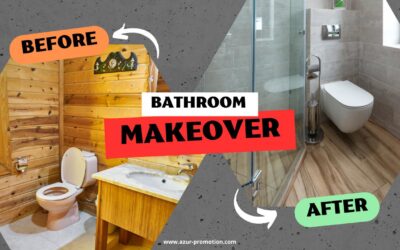As the DIY van movement continues to grow, more and more people are taking on the challenge of converting their own vans into functional, mobile living spaces. While the excitement of building your dream van is undeniable, there are several pitfalls that first-time builders commonly encounter. With proper planning and awareness, these mistakes can be avoided, ensuring a smoother and more enjoyable van building experience. This comprehensive guide will outline the top 5 mistakes to avoid for DIY van builders and provide key insights into creating your perfect mobile sanctuary.
Mistaking Time Estimations
One common error made by first-time van builders is underestimating the time it takes to complete their project. Many people initially predict that their build will take 2-3 months, but realistically, most DIY builds span 12-18 months. This discrepancy is often due to individuals being unable to work on their van full-time and not accounting for unexpected challenges that may arise.
To help minimize the time spent on your build, consider seeking professional assistance for tasks that may be out of your wheelhouse or that require specialized tools. This can save you valuable time and prevent frustrations that may come with attempting certain tasks independently, such as window installation.
Building Out of Order
Another common pitfall is building the van out of order. Proper sequencing is crucial for an efficient build process and ensures that your van’s value progressively increases. The first step should be completing all exterior cutouts, such as windows, fans, skylights, and air conditioners. This allows for easy identification and fixing of any leaks that may occur during installation.
Once the cutouts are complete, move on to insulation, sound deadening, wall panels, and basic lighting installation. Incorporating a heater and simple bed at this stage makes your van functional and enables you to start enjoying your investment even before adding all the bells and whistles. Following these steps will help streamline your building process and prevent the need to backtrack.
Lacking a Comprehensive Plan
Many DIY van builders make the mistake of not having a detailed plan before beginning their project. Just as you wouldn’t build a house without architectural plans, you shouldn’t embark on a van conversion without a clear roadmap. Taking the time to meticulously plan out your van’s layout, features, and components will not only save you time and money but also alleviate the stress and frustration that can come from haphazard building.
Even if you plan to build your van in stages, it’s crucial to have a comprehensive design that covers the entire project from start to finish. This minimizes unnecessary costs, custom modifications, and the need to redo work. If you’re unsure about your plan or need guidance, consult with professionals who can provide valuable insights and advice.
Treating Your Van Like a House
When building a van, it’s essential to remember that it’s not a house – it’s more akin to a boat. The materials, tools, and techniques used in van conversions differ significantly from those used in home construction. For example, electrical systems in vans are designed differently than those in houses, as vans require specific wiring and components that can withstand the unique environment of a mobile vehicle.
Using home building methods, such as installing wooden strips on the floor or implementing a vapor barrier, can add unnecessary complexity to your project and may even prove detrimental to your van’s functionality. Instead, research and utilize methods specifically designed for van conversions, ensuring that your mobile living space is built to withstand the rigors of life on the road.
Incorrect Power System Sizing
Finally, many DIY van builders overestimate the size of the power system their van requires. With the increasing efficiency of appliances and devices designed for van living, most vans don’t require as much power as one might think. What’s essential is having a high-quality power system with multiple ways to charge, such as solar panels, an alternator, and shore power.
A general rule of thumb is to start with a power system consisting of a 200 amp-hour battery and 3,000 watts of AC power. This setup will be sufficient for most basic van builds. However, if your van has a more extensive array of appliances and features, or if you plan to live in your van or use an air conditioner, consider upgrading to a 400-800 amp-hour power system. Assess your power needs carefully to ensure your system can handle your van’s requirements without being overly excessive.
Building your own van can be an exciting and rewarding experience, but it’s essential to be aware of potential pitfalls that can arise during the process. By avoiding these five common mistakes – underestimating time, building out of order, lacking a comprehensive plan, treating your van like a house, and incorrectly sizing your power system – you can ensure a smoother and more successful build.
Remember, proper planning and research are key to creating your ideal mobile living space. Don’t hesitate to seek professional guidance and support when needed – after all, your dream van is an investment in your future adventures. Happy building!





